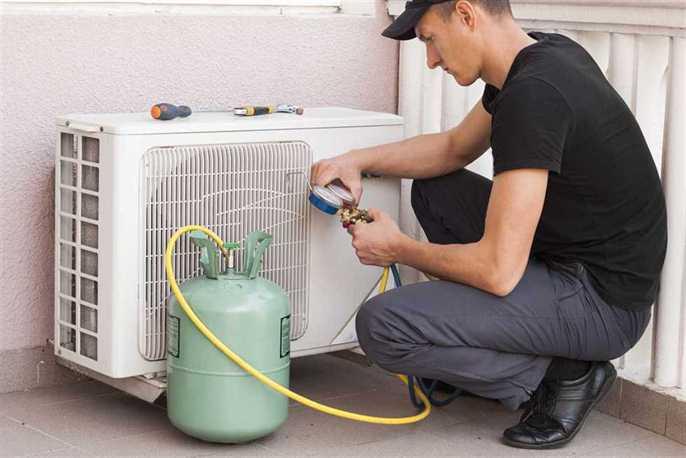
What was life like before air conditioners? We can only imagine what it felt like to be inside on a hot summer day – or, if you’ve ever had the misfortune of your air conditioner breaking down on such a day, then you know exactly what this feels like. The cool air that blows from your AC unit feels like a miracle. It manages to decrease humidity, remove hot air, and blow cool air throughout your home. With a filter, it can even remove pollutants and dust from the air. But how do these machines really work?
Air conditioners were first invented by Willis Carrier in 1902; he designed the machine to remove excess humidity from a printing company building, which was causing issues with the paper. Incidentally, he also found out how to remove heat from the air. Cooling air is a process that has a lot of moving parts; if just one of these components breaks down, your house will soon become a sauna.
An air conditioner doesn’t produce cold air on its own; it takes in warm air from your home and removes the heat from it. To understand how air conditioners work, we need to revisit a lesson you might’ve heard in a science class years ago. Air is cooled through the magic of phase conversion – well, it isn’t actually magic, but it sure feels like it on a scorching day. When a liquid is converted into a gas, heat is absorbed. The evaporator coils within the unit are filled with refrigerants – compounds that can convert states at a low temperature. This process is what grants AC units the ability to cool the air; they exploit this principle to eliminate the heat from your home.
Let’s break it down: the process starts when you adjust your thermostat and request a lowered temperature. Your air conditioner responds by sucking hot air into the AC unit. It passes through a filter that removes dust, pollen, and hair; this improves indoor air quality and saves your unit from being damaged by these particles. Then, the system moves air over the evaporator coils that are full of refrigerant. The heat converts the refrigerant fluid from a liquid to a gas, which absorbs heat from the air. The air also flows through a dehumidifier that removes excess moisture.
Afterward, a fan blows the cooled air into the ducts, where it’s evenly spread throughout the house. The heat from the refrigerant is pushed outside through the fans of the compressor unit. Once the warm air is blown outside, the cooled refrigerant returns to the evaporator coils. The cycle is now ready to begin all over again. Your thermostat will check the temperature of the air, and if it’s at the degree you requested, your air conditioner will shut down.
The mechanics of AC units can get pretty complicated, but they serve an essential function in our homes that is hard to live without. If you’re looking for air conditioning contractors in Winnipeg, call Provincial Heating and Cooling; we provide AC installation, repair, and maintenance.

